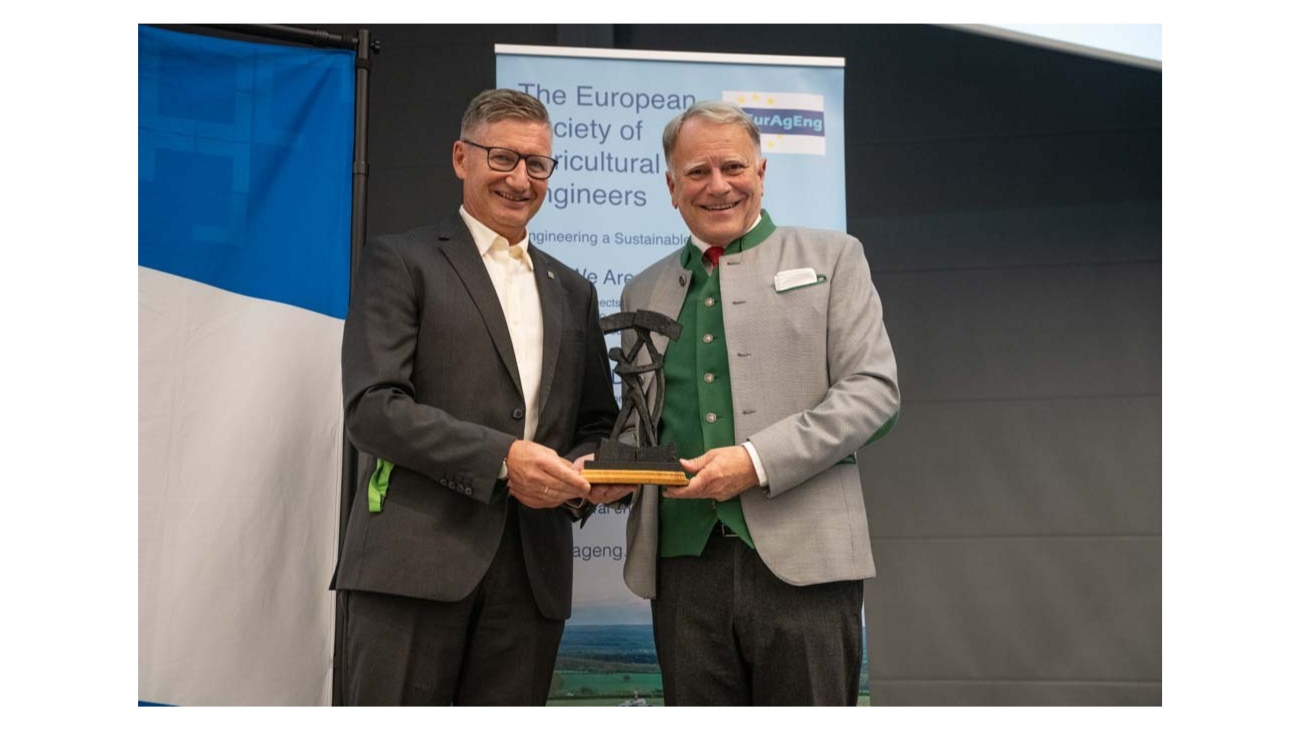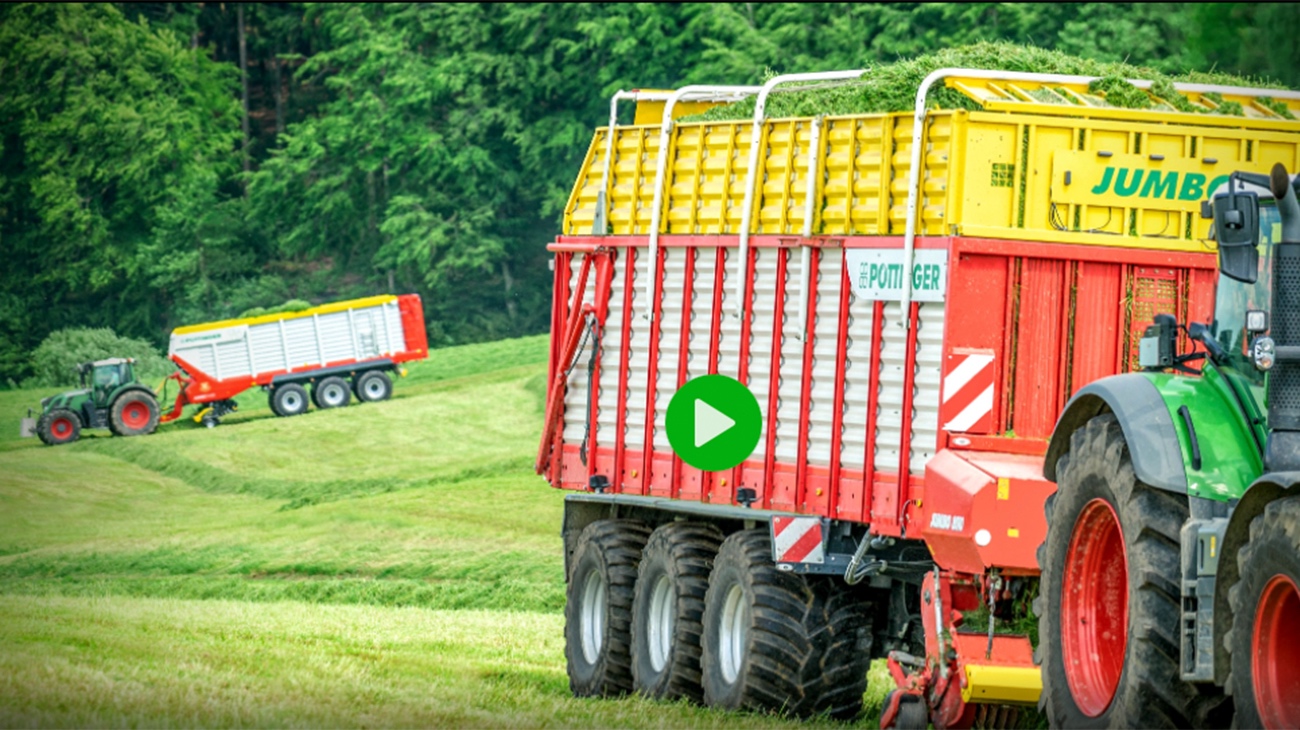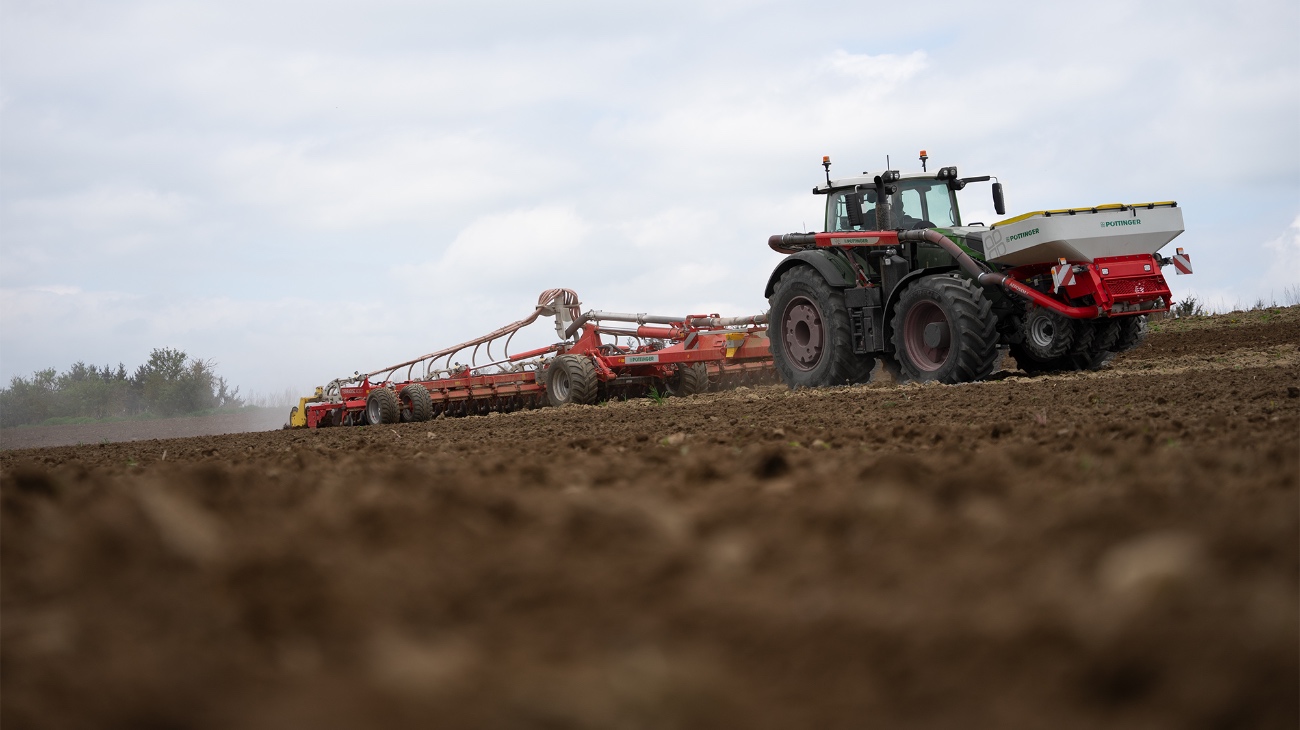
AMICO and TERRADISC T – vitalise the soil
Versatile operations
For high output application during stubble cultivation or seedbed preparation, PÖTTINGER has equipped trailed 5, 6, 8 and 10 metre wide TERRADISC T models with a distribution system. The tillage and simultaneous seed or fertiliser application steps can now be completed in a single pass.
Versatile operations
TERRADISC disc harrows with a distribution system can be used for stubble cultivation as well as loosening to a depth of 15 cm. Different applications can be covered by a distribution rail that can be flexibly adjusted in angle:
- Apply fertiliser for rapid plant development
- Sow cover crops
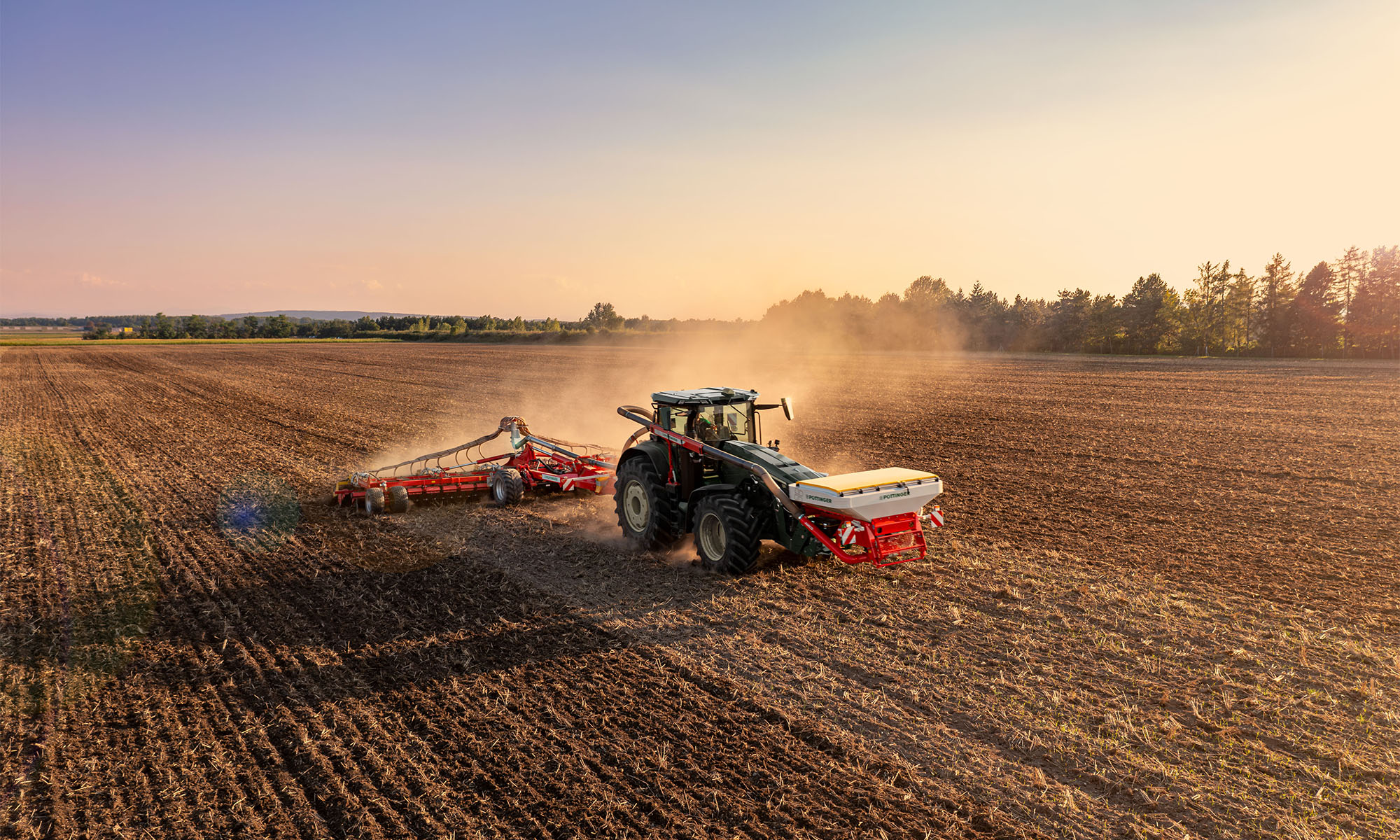
An optional dual metering system enables the application of two components in a single shoot
High output operations
In just one pass, fertiliser and cover crops are sown directly into the soil using this resource-saving process.
By feeding fertiliser into the raised flow of soil, it is incorporated and covered straight away. The fertiliser maintains its effectiveness and nutrient utilisation is increased. This process is suitable for seedbed preparation in spring or for replenishing nutrients with granular trace elements in autumn.
Cover crops are directly stimulated to germinate because they are immediately covered and consolidated by the packer. This can be done during shallow stubble cultivation.
Driving speeds above 10 kph in combination with the wide working widths of 5, 6, 8 and 10 metres ensure an enormous output.
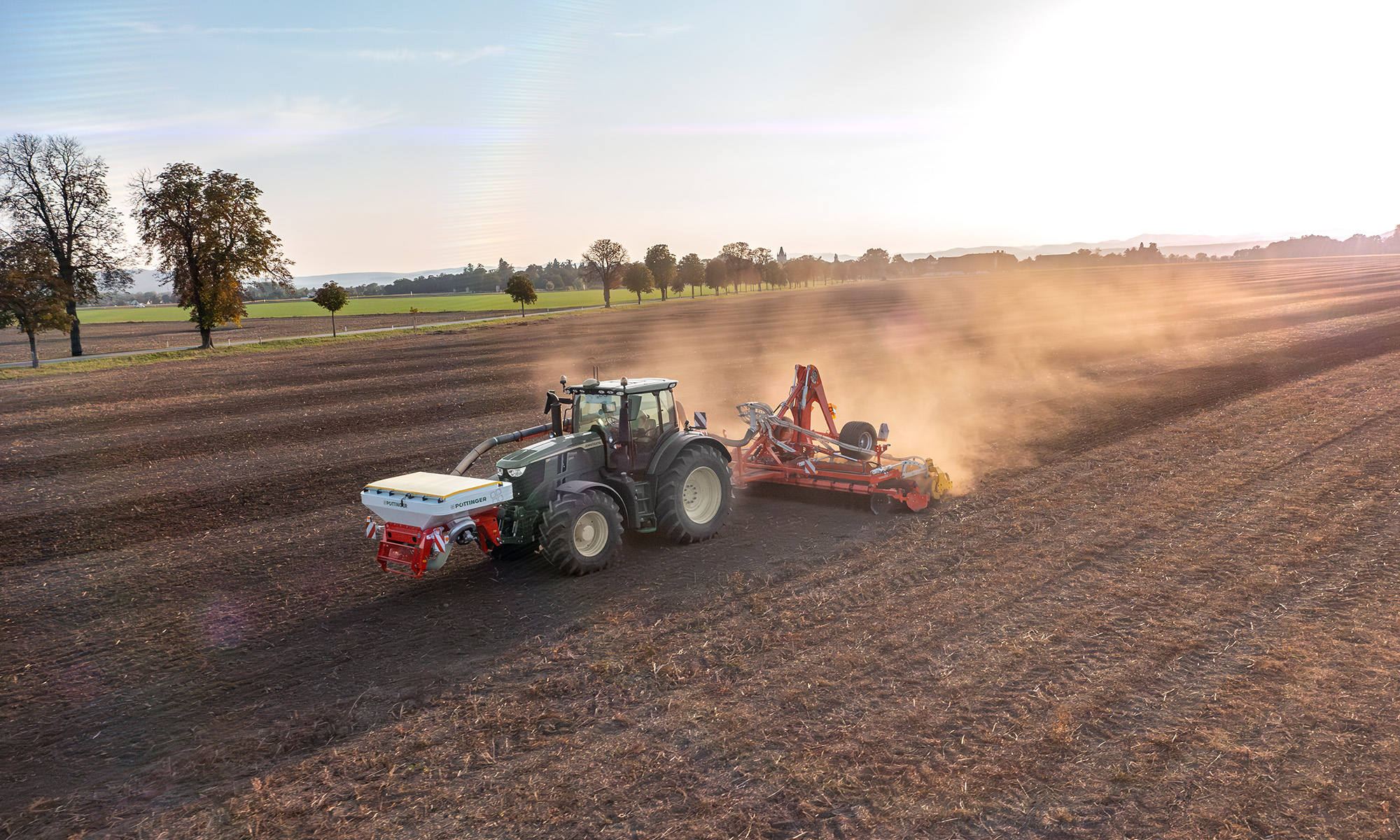
Working widths of 5, 6, 8 or 10 metres enable high output operations
Reliable tillage tools
Large diameter, scalloped discs with a diameter of 580 mm slice into the ground and get the soil moving. The aggressive setting of the tools ensures reliable soil entry, even in the driest conditions. The TWIN ARM suspension system prevents the discs from deviating sideways on hard ground. This ensures that the whole surface is moved, which ultimately ensures uniform application of the seed material and fertiliser.
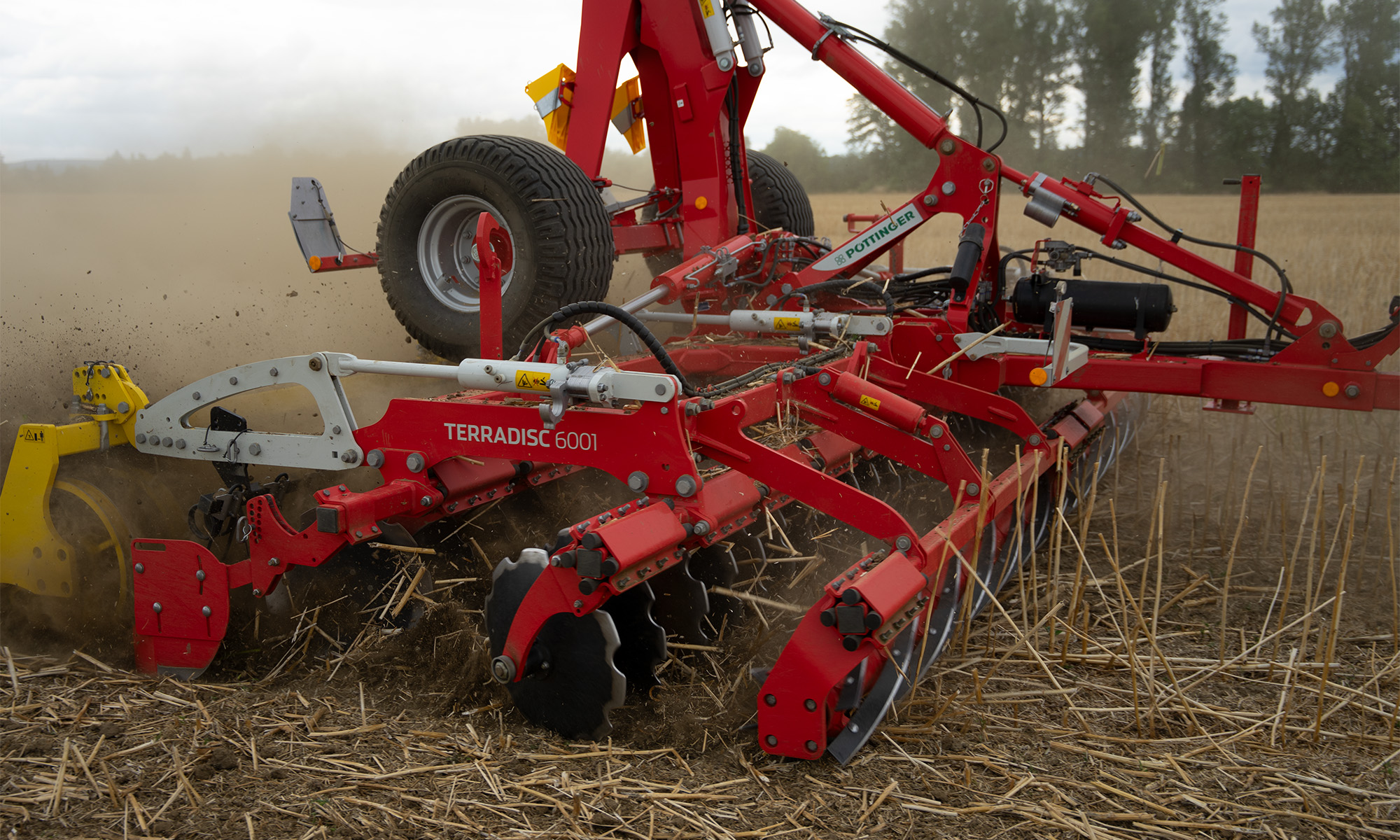
Aggressively set tools for optimum working results
Ingenious distribution system
The tube is designed to be telescopic and is guided centrally on the main frame. The distributor head is located in the middle at the height of the rear roller. In the transport position, the distributor head folds forward to form a compact unit.
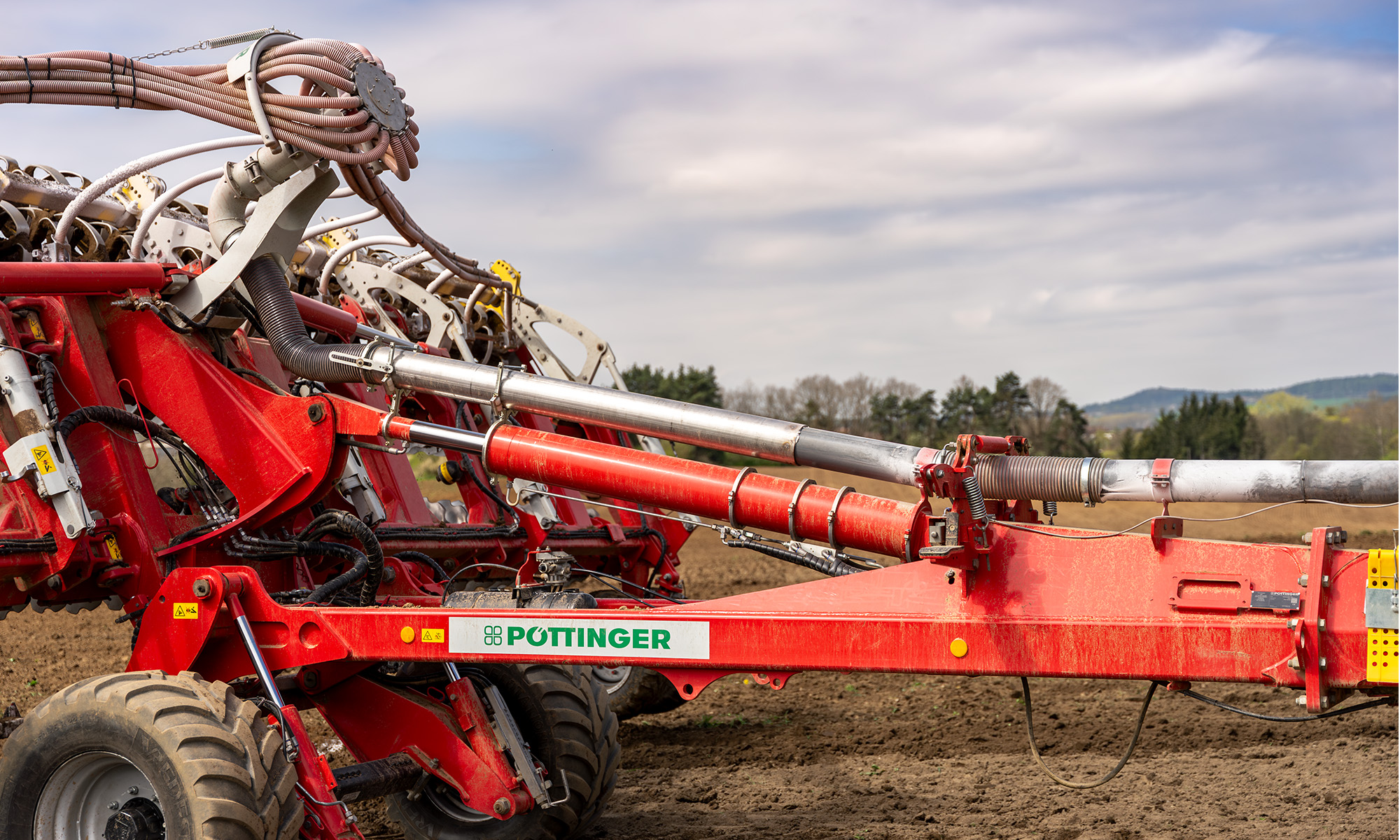
Distribution head in folded position
The large cross-section of 150 mm allows high quantities of fertiliser or seed to be applied at high driving speeds. When the distributor head is folded out, the hoses tighten all the way to the scattering plates so that no blockages occur. As a result, the material is conveyed without obstruction, ensuring a reliable flow.
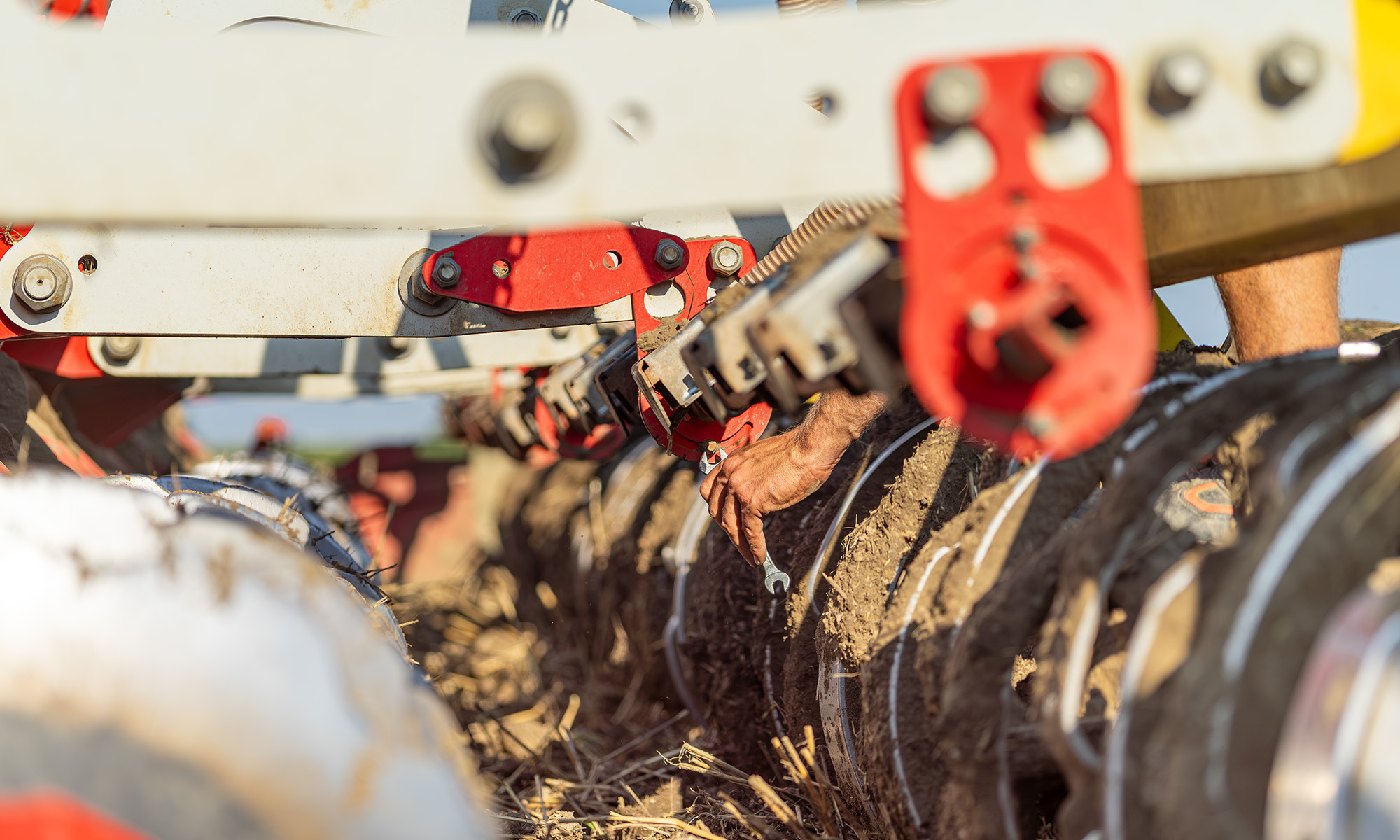
Easily adjustable distribution plates mounted close to the disc tools
Used in combination with trailed TERRADISC T disc harrows, the outlets feed the material directly into the flow of soil. Because it is then covered immediately, emissions during fertiliser application are prevented, while stimulating the germination of cover crops. Even at high driving speeds, precision distribution is achieved across the full width and seed and fertiliser are deposited reliably.
The angle of the distribution rail with all the outlets is adjustable, and two different placement options are described below. Depending on the application, the distribution rail can be set flatter or steeper towards the ground.
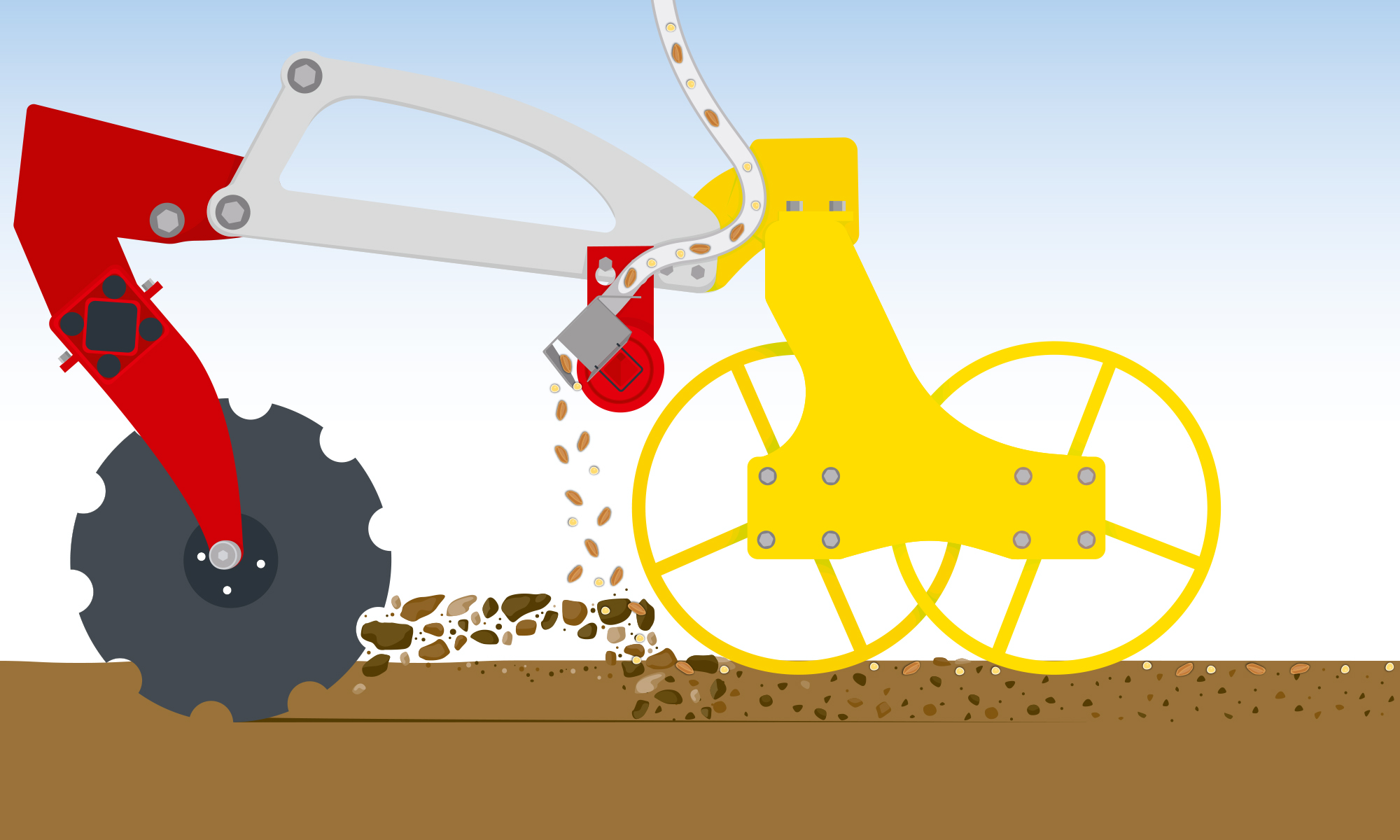
Top placement
Setting the distribution rail with the outlet diagonal to the ground feeds the material into the flow of soil. As a result, the material joins the flow of soil to be deposited on or near the surface.
This method is suitable for sowing greening or cover crop mixtures.
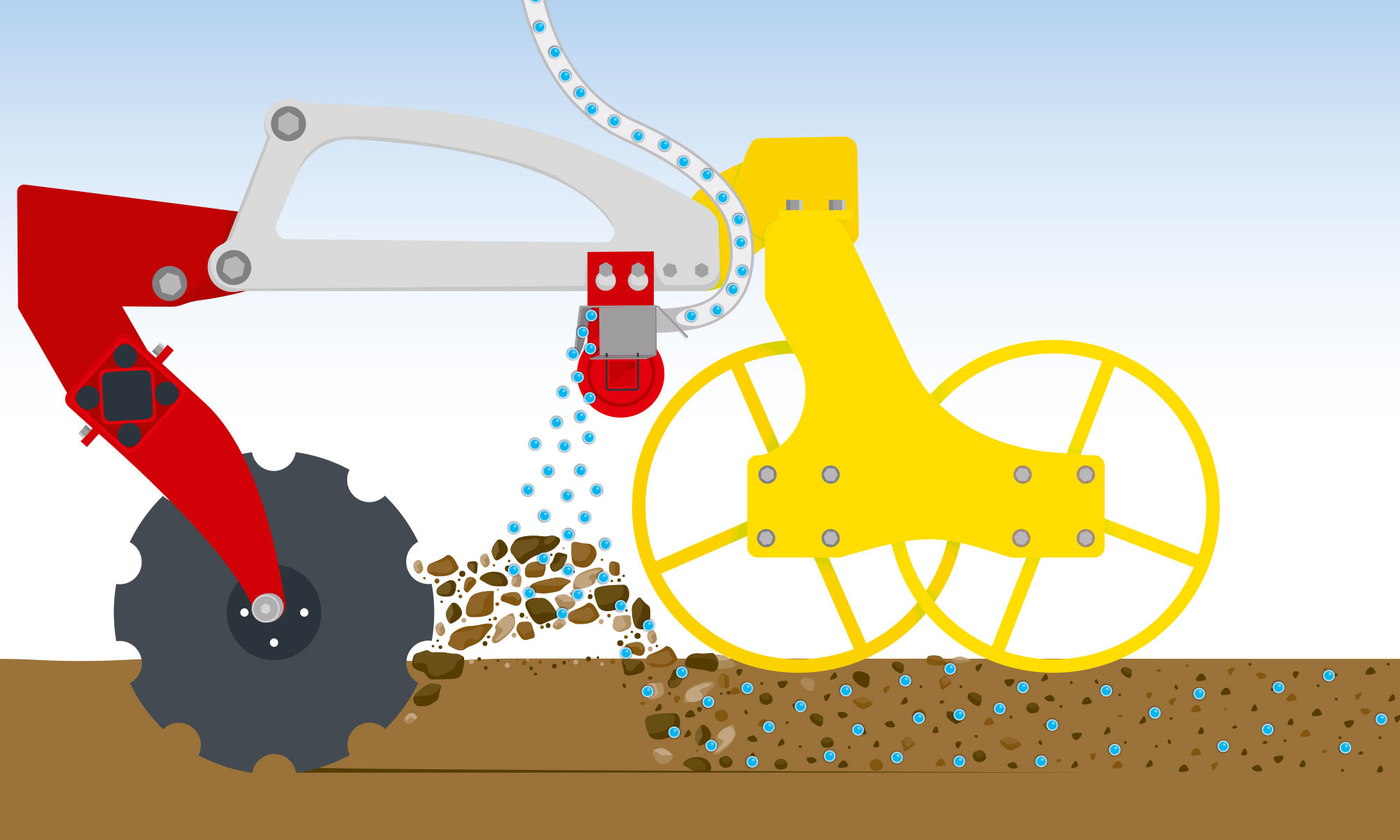
Mixed placement
By setting the distribution rail perpendicular to the ground, the material is immediately mixed into the soil below so that it is deposited across the full cultivation depth. The fertiliser and seed is therefore distributed throughout the entire cross section of soil movement.
During stubble cultivation, for example, compensatory fertilisation of potash or nitrogen can be used to accelerate the decomposition of straw.

